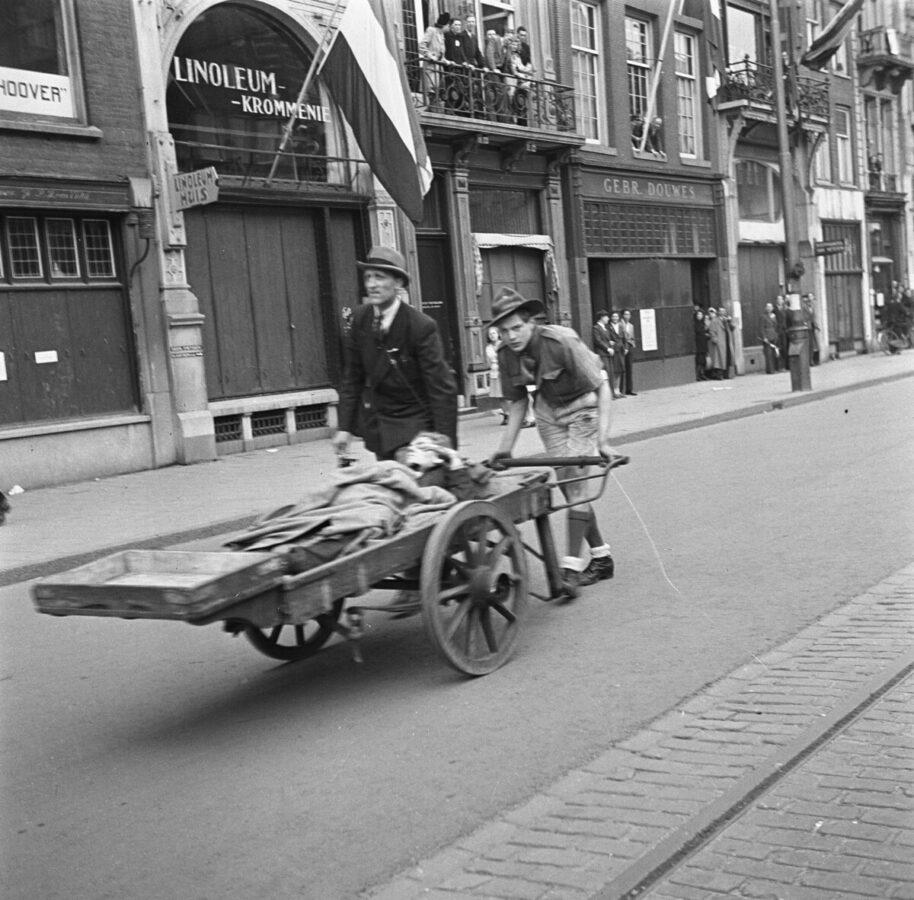On May 7, 1945, a large crowd gathered at Dam Square in Amsterdam. The Second World War was coming to an end after six long, bloody years. However, the event quickly turned into pandemonium.
Two days earlier (on May 5, Liberation Day), the Germans had capitulated to the Allies in the Netherlands.
Yet, the Western part of the Netherlands was still under German occupation until Allied forces could liberate it.
Joy turned to fright
The Dutch expected Canadian forces on May 7, and thousands gathered at Dam Square to welcome them.
There was music, dancing, and of course, a sense of relief that the years of hardship were coming to an end. 😪
READ MORE | Why do Canada and the Netherlands have such a strong relationship?
In the meantime, Nazi German naval officers were trapped inside the Groote Club, a famous gentlemen’s club in Amsterdam.
In the nick of time, Dutch police arrested two German soldiers nearby, on the Paleisstraat. Angered, one of the soldiers refused to give up his weapons and fired a shot.
Suddenly, German soldiers appeared in the windows, on the balcony, and on the roof of the club. Using machine guns, they fired into the crowds that had gathered in Dam Square.
In shock, people scrambled left and right for shelter behind streetlights and any other objects in sight.
What was initially a joyous occasion quickly turned ugly. The German soldiers fired again, and quickly, the resistance returned fire.
The shooting was suppressed
The shooting lasted for two hours, ending around 5 PM that day. Scouts and members of the Red Cross rushed to help the wounded.
It still remains unclear exactly how the shooting stopped.
According to some versions of events, Major Overhoff, commander of the local forces, convinced German Captain Bergmann to accompany him to the Groote Club and order the Germans to cease fire.

Another version of events says that the incident had ended earlier, once local forces fired bazookas at the building (or at least threatened to fire them).
The very same day, shots were also fired at the Amsterdam Central Station— two Dutch soldiers and several German soldiers died.
The aftermath of the Dam shooting
Dutch authorities never properly investigated the shooting (likely because there was so much going on at that time).
Although, it’s estimated that it resulted in 32 casualties (excluding German forces), and wounded over 100 people. The exact numbers are unknown.
READ MORE | 8 unmissable movies about the Netherlands in WWII
The next day (May 8), the Canadian soldiers arrived. Once again, thousands gathered on Dam Square, eager to celebrate the liberation that was long-awaited and to hear their leader, Prime Minister Gebrandy, speak.
German soldiers remained at the Groote Club till May 9, when the Canadian forces arrived, took them into custody, and shipped them back to Germany.
How do we remember the shooting today?
To commemorate the events, locals have placed a plaque by Dam Square and Klaverstraat. Stones bearing the victims’ names are also embedded in the pavement of the square.
READ MORE | Two minutes of silence across the Netherlands: Remembrance Day
And, of course, each year on Remembrance Day, a nationwide two-minute silence is observed to commemorate those who died during the war.
Does your country have an equivalent to Remembrance Day or Liberation Day? Let us know in the comments below.
Feature Image: Krijn Taconis/Wikimedia Commons/Public Domain





Answer to that question is no ! Ireland was and still is a neutral country and still is !well for the time being , and is well disputed my
a lot of people here !
Ww2 was called the emergency!!